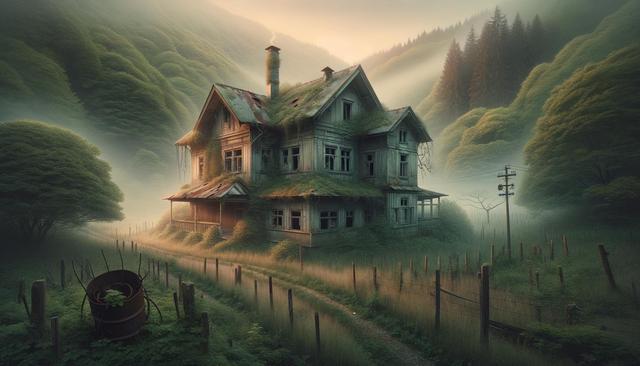The Allure and Mystery of Abandoned Homes
There’s something captivating about abandoned houses. Whether it’s their crumbling facades, boarded windows, or overgrown gardens, these structures often draw curious onlookers and inspire questions. What happened to the families that once lived there? Why were these homes left behind? The mystery surrounding their abandonment is part of what makes them so intriguing. They often serve as time capsules, preserving elements of past decades—from outdated wallpaper to forgotten furniture.
In many cases, these homes are left due to economic hardship, natural disasters, or changes in neighborhood demographics. Some were victims of legal disputes or inheritance issues that left them in limbo. Despite their deterioration, abandoned houses evoke a sense of nostalgia and wonder, making them popular subjects for urban explorers, historians, and photographers.
Historical Significance and Architectural Insights
Many abandoned houses carry architectural styles that reflect the eras in which they were built. From Victorian homes with ornate details to mid-century modern structures, these buildings offer a glimpse into the past. Even in their dilapidated state, their craftsmanship and design can still be appreciated. Preserving and documenting these homes can contribute to a broader understanding of cultural and regional history.
In some communities, local historical societies or preservation groups work to identify and protect homes with significant historical value. These efforts include:
- Researching property records and former occupants
- Cataloging architectural features
- Campaigning for landmark status or restoration funding
Even when full restoration isn’t feasible, raising awareness about these buildings can help preserve their stories.
The Emotional Weight of Abandonment
Abandoned houses can evoke a wide range of emotions. For some, they represent loss and decay, while for others, they symbolize resilience and the passage of time. The sight of a once-lively home left to deteriorate can stir feelings of melancholy or curiosity. These emotional responses are often deeply personal, shaped by individual experiences and perceptions.
In literature and film, abandoned houses are frequently used as metaphors for forgotten memories or unspoken truths. Their decaying walls and silent rooms serve as powerful backdrops for storytelling. This emotional complexity adds another layer to why people are drawn to these spaces, whether to explore them physically or reflect on them through art and media.
Urban Exploration and Ethical Considerations
The rise of urban exploration has brought more attention to abandoned houses. Enthusiasts often seek out these structures to explore, document, and photograph them. While this can yield fascinating insights and visuals, it also raises important ethical and legal questions. Trespassing laws, property rights, and safety hazards must all be considered before entering an abandoned home.
Urban explorers are encouraged to follow a set of informal guidelines, often referred to as the “explorer’s code”:
- Take nothing but pictures
- Leave nothing but footprints
- Respect the property and its history
- Do not share exact locations to prevent vandalism
By adhering to these principles, explorers can minimize their impact while still appreciating the unique aspects of abandoned houses.
Revival and Reuse: Giving New Life to Old Homes
While many abandoned houses remain untouched, others are given a second chance through renovation or adaptive reuse. With the right investment and vision, these properties can be transformed into livable homes, art spaces, or community centers. This not only helps preserve the structure but also revitalizes neighborhoods and adds character to communities.
Challenges in restoring abandoned homes include:
- Structural damage and code violations
- High renovation costs
- Legal hurdles related to ownership or zoning
Despite these obstacles, there are success stories where abandoned houses have been restored with care and creativity. These projects often attract attention for their blend of old and new, turning spaces that were once forgotten into vibrant parts of the community.
Conclusion: Reflecting on the Stories Left Behind
Abandoned houses are more than just empty buildings—they are silent storytellers of the past. Whether viewed through the lens of architecture, emotion, or potential, they offer valuable insights and opportunities for preservation and reflection. For those interested in history, design, or community development, these homes represent a unique intersection of the forgotten and the possible. By approaching them with respect and curiosity, we can uncover narratives that deserve to be remembered.




Leave a Reply